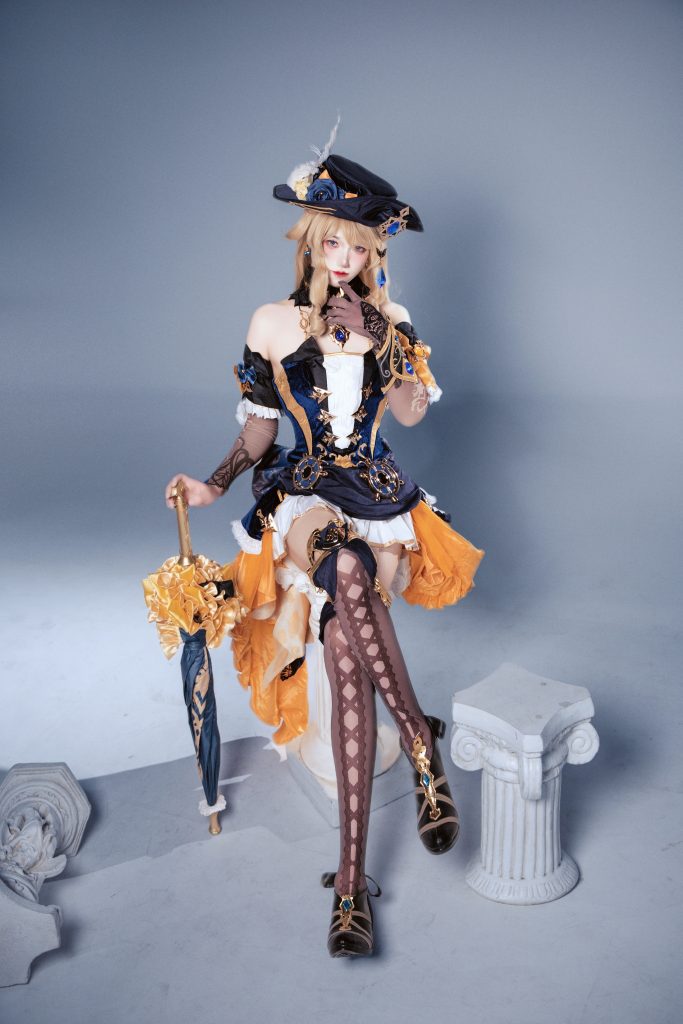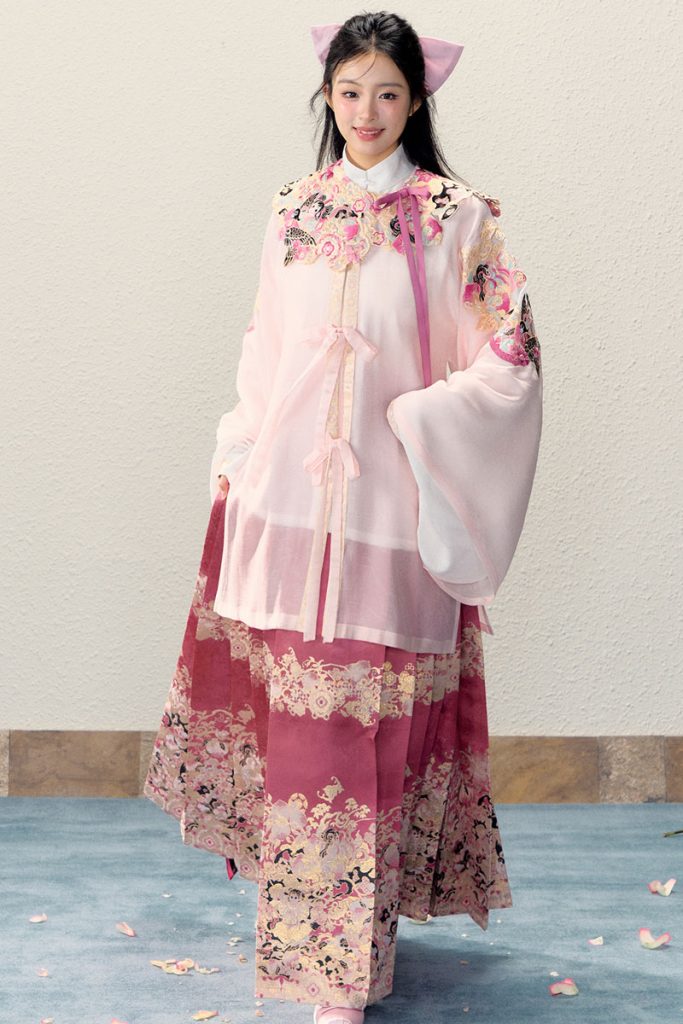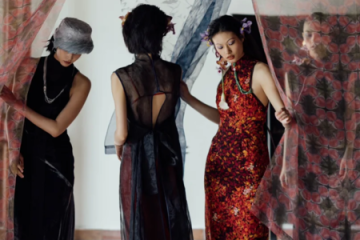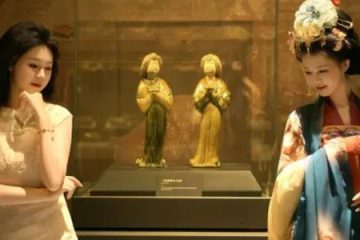Can I Wear Hanfu If I’m Not Chinese?

Picture this: You stumble upon a photo of a Song Dynasty beizi – those elegant, flowing robes with delicate embroidery. You’re captivated. You imagine wearing it to a summer garden party. Then, a nagging question pops up: “Wait… can I, as a non-Chinese person, actually wear this?” If this resonates, you’re not alone. The global fascination with Hanfu is soaring, but so is the confusion about cultural boundaries. Let’s cut through the noise.
Ⅰ. The Short Answer? Yes, You Absolutely Can.
I actually have some similar examples from my own life—one of my friends is really into Lolita fashion. She wears her frilly dresses out shopping, to anime conventions, and even just for fun. Her attitude is simple: if you love it, wear it! Sure, Lolita fashion has roots in European aristocratic styles, but it’s become a global phenomenon. People all over the world wear it now, and she feels that enjoying and appreciating it is what really matters.

Of course, while Hanfu and Lolita share some similarities in terms of niche fashion communities and cultural aesthetics, Lolita is definitely more established and recognized internationally. Hanfu is still growing in global visibility.
But back to the point—at SilkDivas, we believe that when it comes to clothing and cultural exchange, openness often reflects a nation’s confidence and vitality. Over a thousand years ago, during China’s Tang Dynasty, people from other countries would come to the bustling streets of Chang’an wearing Tang-style clothing, speaking Chinese, and adopting Chinese customs. Rather than being viewed as appropriation, this was a symbol of cultural influence and national strength.

But (and it’s a crucial ‘but’) – how and why you wear it matters. Wearing Hanfu isn’t about claiming Chinese heritage; it’s about appreciating its beauty and history with genuine respect.
Just a quick note: while it’s absolutely fine to wear Hanfu out of appreciation, it’s important to be respectful. That means not using it in sexualized contexts, and definitely not misrepresenting its origins. Hanfu is uniquely Chinese—it’s not from Korea, Japan, or Vietnam. If someone wears Hanfu but tries to claim it comes from somewhere else, that’s not cultural appreciation—that’s just stealing. 🚫

Ⅱ. What Exactly Is Hanfu? (More Than Just “Pretty Clothes”)
Don’t confuse it with a Halloween costume or a movie prop. Hanfu (汉服 – Hànfú) refers to the historical clothing system of the Han Chinese people, with distinct styles evolving over millennia (Han, Tang, Song, Ming dynasties being major eras). It’s experiencing a powerful Hanfu Revival Movement in China, driven largely by young people reconnecting with their heritage.
- Key Idea: It’s living cultural heritage, not a static relic. People wear it for festivals, weddings, photoshoots, and even daily life in China today.
- Not To Be Mixed Up With: Japanese Kimono/Yukata, Korean Hanbok, or Qing Dynasty Manchu-inspired clothing (often mistakenly called “Chinese” in old Western movies). Each has unique structures and histories.
- The Soul Within: Hanfu embodies deep-rooted Chinese aesthetics – harmony between human and nature (“天人合一” in Chinese), modesty, flowing silhouettes, and intricate symbolism in colors, patterns, and accessories. It’s woven with philosophy.

Ⅲ. Where Hanfu Wearing Crosses into Appropriation
1. Trivializing the Sacred: Using highly ceremonial or religiously significant items (like specific ritual robes or headdresses) as a frivolous fashion statement or costume.
2. Ignorant Mashups: Frankenstein-ing Hanfu pieces with completely unrelated cultural elements disrespectfully (“Hanfu top with Native American headdress? Hard No.”).
3. Claiming Invention: Saying “I designed this!” when you’re just copying a Ming Dynasty *Mamianqun* (Horse Face Skirt) pattern without credit. (some brand has done this here)
4. Exploiting for Profit: Big fast-fashion brands mass-producing cheap, inaccurate “Hanfu-inspired” knockoffs while Chinese artisans struggle.

Ⅳ. A Few Thoughts and Reflections
As someone who’s been part of the Hanfu community for years, I’ve witnessed so many changes. I still remember mentioning a piece of news in an earlier blog post that really stuck with me…
On November 22, 2003, on the streets of Zhengzhou, a man dressed “strangely” walked calmly through the alleys and among the crowds. This man “wasn’t a fashion model. Instead, he was an ordinary citizen, Wang Letian (王乐天), a 34 – year – old power worker.” The report in The Straits Times (《联合早报》) attracted widespread attention from domestic and foreign media. Wang Letian thus became the first person in modern China to be publicly reported for wearing Hanfu in public.

Back then, public reactions to Hanfu were mostly negative—comments like “This person must be crazy” or “That outfit looks all wrong” were common. But things have changed a lot. Now when people see someone in Hanfu, the responses are much more positive: “It’s stunning—this is exactly how it should be worn!” or “I’d love to try that one day too.” The cultural atmosphere has clearly become more welcoming over time.
I remember once on my way home from work, I sat next to a woman in her 30s who was wearing a full Tang-style Hanfu. I complimented her outfit and mentioned she must’ve spent a lot of time getting ready. She was so happy that she even gave me a ticket to the Chang’an Twelve Hours theme park in Xi’an.
I tried to decline, but she insisted. When I entered, I realized most visitors were also fully dressed in Hanfu, some with professional photographers in tow. There were even foreigners dressed up and taking photos—they clearly did their research before coming. That kind of respectful engagement is truly appreciated! ❤️
Summary
I also came across a breathtaking Hanfu photo online that fits perfectly with this blog’s theme. According to the photographer, the model brought in two reference photos and asked for a Hanfu-style shoot. She had been studying Chinese on her own for years and had a deep passion for Hanfu culture.

Passion might just be the best teacher. Here’s to a bright future for traditional Chinese clothing!
After reading all this, what are your thoughts? Feel free to share them in the comments below!
(Cover image credit: Little red note creator“德国小土豆Simon”)



0 Comments